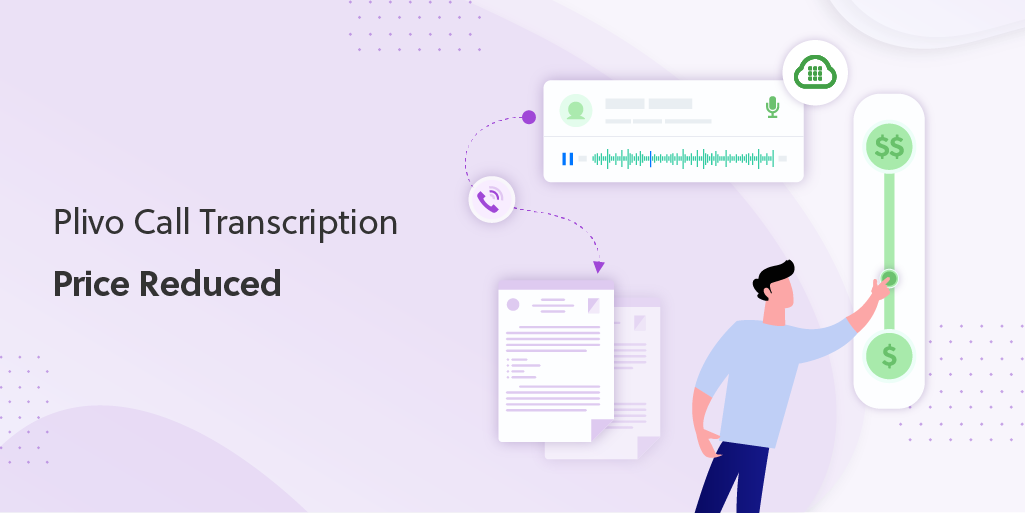
SMS Pricing Comparison: Plivo vs. Twilio
-
Pricing
- 15 May 2020
SMS is one of the most widely used forms of communications around the world, and one of the most efficient, thanks to instant delivery and open rates of up to 98%. The demand for enterprise application-to-person (A2P) messaging is growing, driven by several factors, including smartphone availability, a mobile-first mentality, and demand for real-time and personalized communications.
In the US alone, businesses send billions of SMS messages daily to their customers to communicate everything from delivery statuses to order notifications to security alerts to two-factor authentication notices.
SMS and MMS messages let you communicate directly with current and potential customers. Two critical factors determine the business impact of your SMS programs: delivery reliability and cost.
In this post, we focus on the second factor. Plivo stacks up as the best Twilio alternative across three pricing categories:
- Phone number rates
- SMS rates
- MMS rates
Compare phone number pricing
Phone number rates are the starting point of your pricing plan. While the cost of leasing one or more numbers from your provider doesn’t have the largest impact on your budget, the price will influence your overall return on investment (ROI).
Plivo’s phone number pricing is competitive across the board, saving customers as much as 50% compared to Twilio when it comes to toll-free and short code numbers.
Competitive SMS rates support mobile communications
Now let’s look at per-message rates. You need a cost-effective framework that provides competitive SMS rates at any volume.
Below, we’ll break down what goes into Plivo’s and Twilio’s standard and carrier-set fees and outline the difference those price points make with a real-world campaign example.
Standard text message pricing
Message for message, Plivo’s pricing saves customers 33% on message send via local outbound numbers, 23% on toll-free numbers, and 40% on short codes. Even better: Local inbound messages are free with Plivo (vs. $0.0075 for Twilio).
How much of a difference can those savings make? If you were to plan a campaign of 1 million outbound short code messages, as outlined in the graphic above, that 40% rate difference would translate to $3,000 saved in standard text message fees.
Carrier passthrough fees
Rates may be the main cost of sending messages, but carrier passthrough fees also apply. Passthrough fees for outbound messages vary depending on the carrier network used to deliver the messages. Your SMS API partner adds these fees to the per-message rate.
Think of this like a sales tax — every provider charges the fee based on what each carrier charges them. For example, Verizon charges $0.0025 per SMS message for local and short code numbers, and US Cellular charges $0.0035 for outbound messages from short code numbers and $0.005 for outbound messages from local numbers.
When planning your budget for SMS campaigns, a good rule of thumb to estimate the fee you’ll be charged is to multiply your monthly message volume by each network carrier’s market share ratio. For a campaign of 1 million outbound short code messages, for instance, Verizon would charge around $730 in carrier passthrough fees and US Cellular would charge about $42, based on Q3 2019 market shares.
When we take a look at how standard SMS fees combined with carrier passthrough fees add up across a month-long campaign of 1 million short code messages, it’s easy to see which provider is more affordable. By using Plivo for those messages to US customers, you’d save close to 35% compared to the cost of the same program with Twilio.
The difference is clear: Plivo has better SMS pricing across the board.
Having said all this, we would be remiss if we didn’t note that cost isn’t everything; reliability and deliverability count for a lot. Plivo uses a quality-based routing (QBR) system to ensure you get the best deliverability possible for each dollar you spend.
And Plivo offers inbound and outbound toll-free SMS services, which Twilio does not support.
MMS provides high-impact messaging campaigns
MMS gives businesses more engaging impact for their messaging by using rich-media formats like images, video, and audio.
Because more data is required to deliver the extra media, MMS pricing differs from SMS costs.
Plivo offers more economical price points for both inbound and outbound local MMS pricing.
General MMS pricing
Like SMS pricing, your MMS pricing rate is set by your SMS API on a per-unit basis.
While per-message rates go down as volume goes up, subtle differences in Twilio’s per-MMS-message pricing can lead to a significant difference in total cost between it and competitors. On average, Plivo customers save 20% on outbound and inbound MMS message costs.
When scaled up to that same campaign of 1 million messages we used for SMS pricing, these price points make a big difference.
As is the case with SMS messages, API providers pass along carrier-set fees for MMS messages. These are equal between Plivo and Twilio.
Picking the best Twilio alternative
The numbers are clear, and thousands of innovative companies know Plivo is the best Twilio alternative because of our combination of quality, reach, and affordability.
If you’re ready to get better mileage out of your SMS budget, download our full pricing guide for all 190+ countries in our network.








